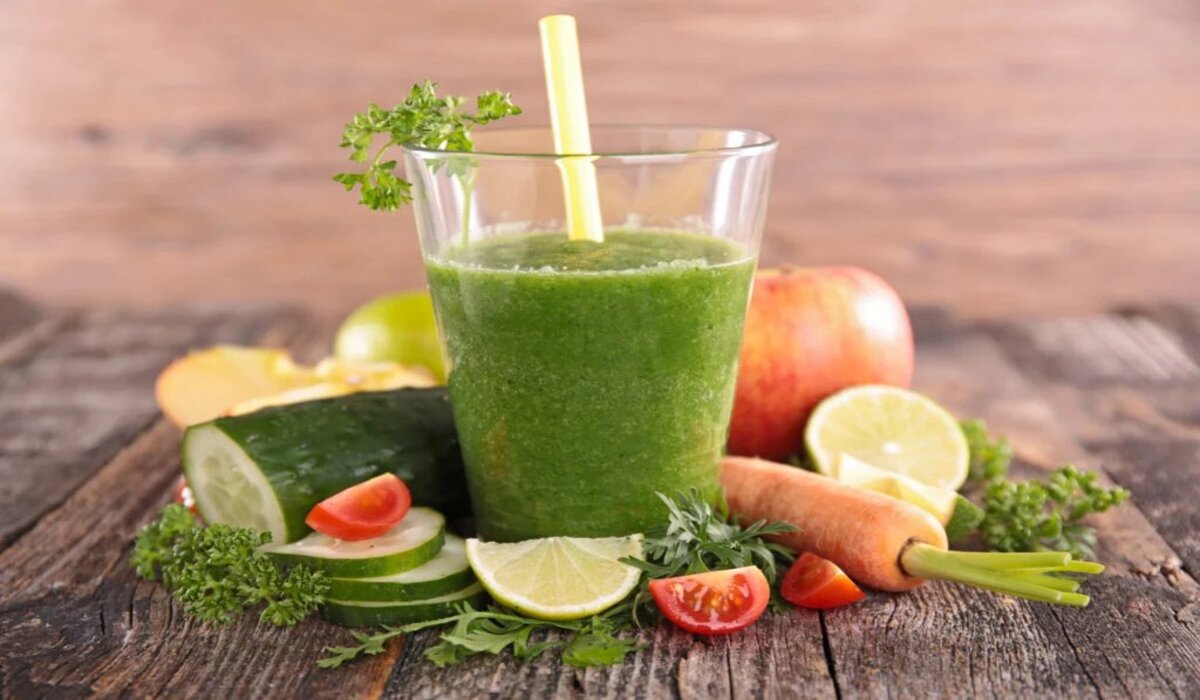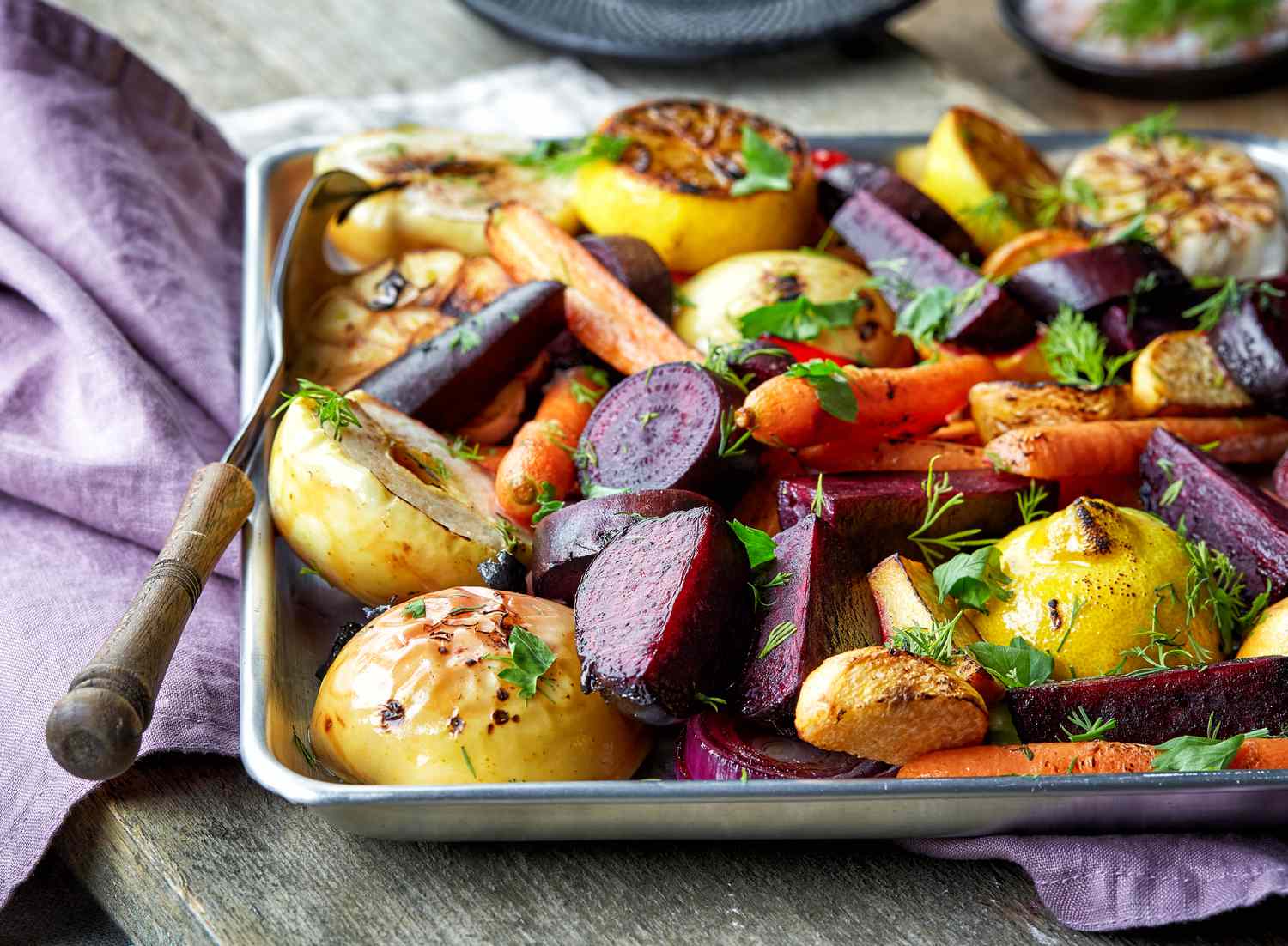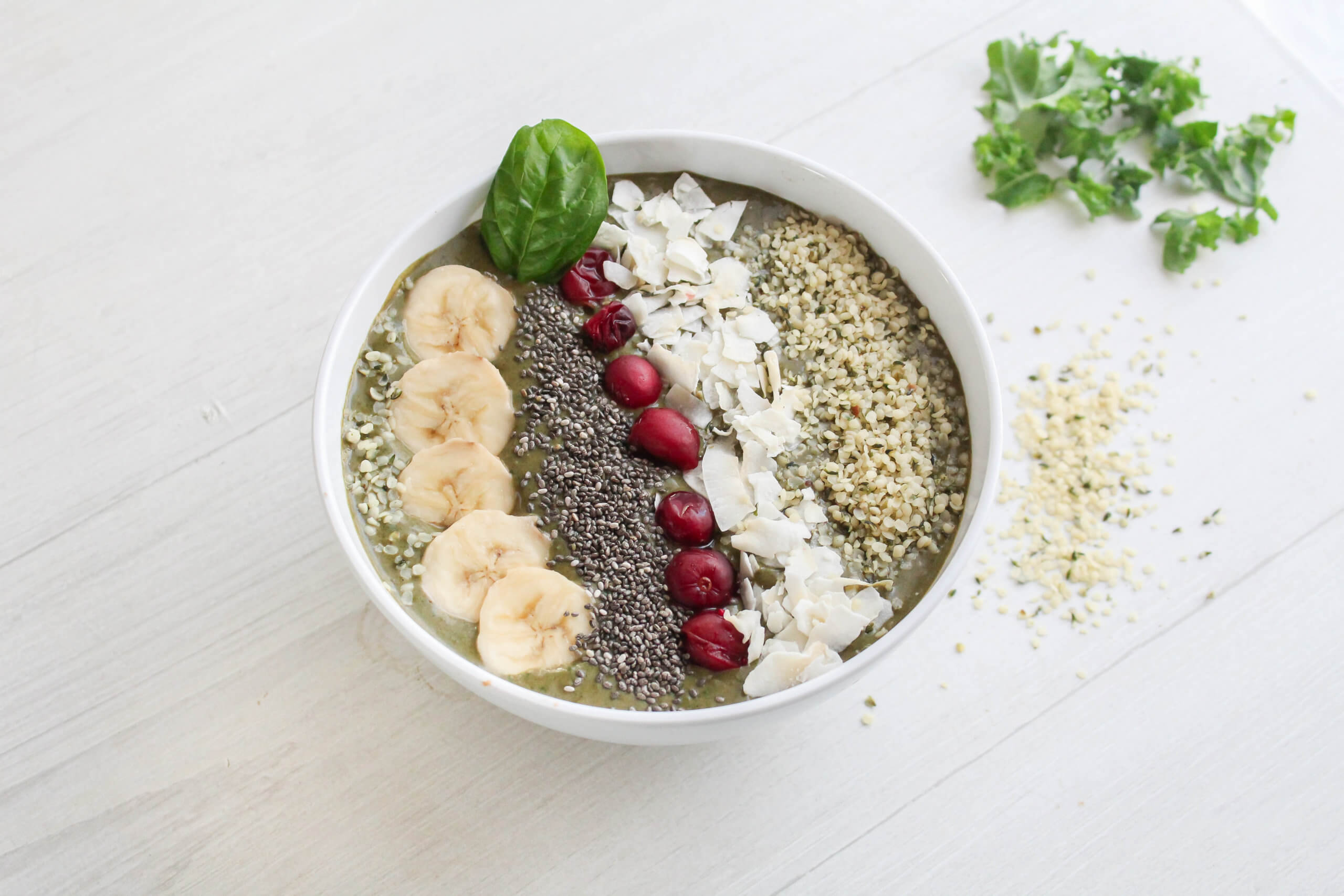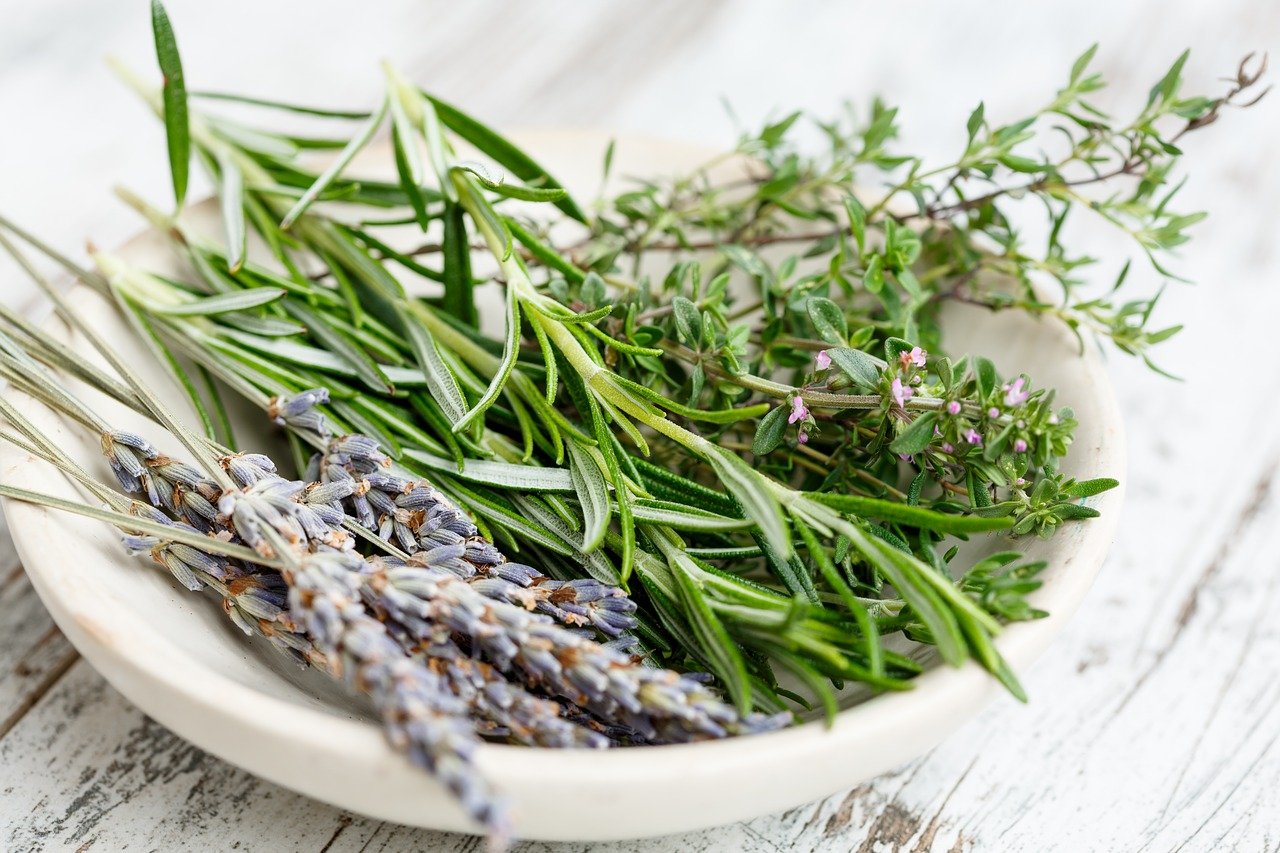Home>Gardening News and Trends>Latest News>What Vegetables Are Good In Smoothies


Latest News
What Vegetables Are Good In Smoothies
Modified: January 22, 2024
Discover the latest news on what vegetables are good in smoothies and boost your health with fresh and nutritious flavors. Start enjoying the benefits of adding greens to your daily smoothie routine.
(Many of the links in this article redirect to a specific reviewed product. Your purchase of these products through affiliate links helps to generate commission for Chicagolandgardening.com, at no extra cost. Learn more)
Table of Contents
Introduction
Smoothies have become a popular choice for many people who are looking for a convenient and nutritious way to boost their intake of fruits and vegetables. While fruits are commonly used in smoothie recipes, adding vegetables can take your smoothies to a whole new level of health benefits. Not only do vegetables offer a wide range of essential nutrients, but they also provide fiber and contribute to a well-rounded diet.
When it comes to incorporating vegetables into smoothies, there is an endless variety to choose from. From leafy greens to cruciferous vegetables and root vegetables, each one brings its own unique set of nutrients and flavors to the mix. Whether you’re a seasoned smoothie enthusiast or new to the concept, understanding which vegetables work best in smoothies can help you create delicious and nutrient-rich blends.
In this article, we will explore the benefits of adding vegetables to smoothies and delve into specific categories of vegetables that are particularly well-suited for blending. Additionally, we will provide some tips on how to incorporate these vegetables into your smoothie recipes seamlessly.
So if you’re ready to take your smoothie game to the next level and boost your nutrient intake, let’s dive into the world of vegetables that are good in smoothies!
Benefits of Adding Vegetables to Smoothies
While fruits are often the star ingredient of smoothies, incorporating vegetables into your blends can offer numerous health benefits. Here are some key reasons why adding vegetables to your smoothies is a game-changer:
- Nutrient Powerhouse: Vegetables are packed with essential vitamins, minerals, and antioxidants that support overall health. By adding them to your smoothies, you can easily increase your nutrient intake, promoting optimal wellness.
- Fiber Boost: Many vegetables are rich in dietary fiber, which is essential for a healthy digestive system and promoting satiety. Adding vegetables to your smoothies can help increase your fiber intake, aiding in digestion and promoting feelings of fullness.
- Weight Management: Incorporating vegetables into your smoothies can be an effective strategy for weight management. Vegetables are low in calories and high in volume, which can help fill you up without adding excessive calories. They also provide a good amount of nutrients, helping you maintain a balanced diet.
- Increased Hydration: Certain vegetables, such as cucumbers and celery, have high water content. Adding these hydrating vegetables to your smoothies can contribute to your daily hydration needs, keeping your body properly hydrated.
- Blood Sugar Regulation: Vegetables, especially leafy greens, have a low glycemic index, meaning they have a minimal impact on blood sugar levels. Incorporating vegetables into your smoothies can help stabilize blood sugar levels, making them a suitable option for those with diabetes or anyone looking to maintain stable energy levels throughout the day.
- Improved Digestion: Many vegetables contain enzymes and fiber that support healthy digestion. Blending them into smoothies can help break down the fiber, making it easier for your body to absorb the nutrients and supporting overall digestion.
Incorporating vegetables into your smoothies offers an array of benefits for your overall health and well-being. Now that we’ve explored the advantages of adding vegetables to your blends, let’s move on to discovering which specific vegetables are good choices for smoothies.
Leafy Greens for Smoothies
Leafy greens are an excellent addition to your smoothies, as they are not only packed with essential vitamins, minerals, and fiber, but they also offer a mild and pleasant taste when blended. Here are some leafy greens that work well in smoothies:
- Spinach: Spinach is a popular choice for smoothies due to its mild taste and versatility. It is rich in iron, calcium, vitamin K, and folate. Adding a handful of spinach to your smoothies can boost their nutritional content without overpowering the flavor.
- Kale: Kale is a nutrient powerhouse, providing a hefty dose of vitamins A, C, and K, as well as fiber and antioxidants. While kale has a slightly stronger taste compared to spinach, blending it with sweet fruits like pineapple or mango can help balance the flavors and create a refreshing smoothie.
- Swiss Chard: Swiss chard is an excellent source of vitamins A, C, and K, as well as iron and fiber. Its vibrant colors and slightly earthy taste make it a visually appealing addition to smoothies. Consider pairing it with citrus fruits or berries for a delicious and nutritious blend.
- Arugula: Arugula adds a peppery kick to smoothies and is loaded with nutrients, including vitamins A, K, and C, as well as potassium and calcium. Its bold flavor pairs well with citrus fruits and can add an interesting twist to your smoothie recipes.
- Collard Greens: Collard greens are rich in vitamins A, C, and K, as well as calcium and fiber. They offer a slightly bitter taste that can be balanced with the sweetness of fruits like bananas or apples. Incorporating collard greens into your smoothies adds a nutritional boost to your daily routine.
When using leafy greens in your smoothies, it is best to start with a small amount and gradually increase the quantity as your taste buds adjust. To further enhance the nutritional value of your smoothie, consider combining different types of leafy greens for a varied nutrient profile. Now that we’ve explored the leafy greens category, let’s move on to the next set of vegetables that are great for blending.
Cruciferous Vegetables for Smoothies
Cruciferous vegetables are not only incredibly nutritious but also add a unique flavor and texture to your smoothies. These vegetables are part of the Brassicaceae family and are known for their high content of vitamins, minerals, and antioxidants. Here are some cruciferous vegetables that you can incorporate into your smoothie recipes:
- Broccoli: Broccoli is a versatile vegetable that offers an abundance of nutrients, including vitamins A, C, and K, folate, and fiber. When using broccoli in smoothies, it is recommended to lightly steam or blanch it before blending to make it easier to digest and ensure a smoother consistency.
- Cauliflower: Cauliflower is a mild-tasting vegetable that is rich in vitamins C and K, as well as dietary fiber. Its creamy texture makes it a great addition to smoothies, providing a smooth and velvety consistency. To use cauliflower in smoothies, you can either steam it or use it raw, depending on your preference.
- Cabbage: Cabbage is a versatile vegetable that comes in various colors, such as green, red, and purple. It is a good source of vitamins C and K, as well as fiber and antioxidants. Adding a small amount of cabbage to your smoothies can provide a crisp texture and a mildly sweet flavor.
- Kohlrabi: Kohlrabi is a lesser-known cruciferous vegetable that is rich in vitamins C and B6, as well as potassium and fiber. It has a pleasantly crisp texture and a slightly sweet and peppery flavor. Including kohlrabi in your smoothies can add a unique twist and boost the nutrient content.
- Arugula: While arugula was mentioned in the previous section on leafy greens, it also falls under the cruciferous category. Its peppery taste can add a zesty kick to your smoothies. The combination of its bold flavor and nutritional benefits makes it a great option to incorporate into your blends.
When using cruciferous vegetables in smoothies, it is important to remember that their flavors can be strong, so it’s best to start with smaller amounts and adjust to your taste preferences. Additionally, if you prefer a smoother texture, consider lightly steaming or blanching these vegetables before blending. Now that we’ve explored cruciferous vegetables, let’s move on to the next category: root vegetables.
Root Vegetables for Smoothies
Root vegetables are a fantastic addition to smoothies as they not only provide a natural sweetness but also offer a range of vitamins, minerals, and fiber. Incorporating these nutrient-dense vegetables into your blends adds depth and flavor. Here are some root vegetables that work well in smoothies:
- Carrots: Carrots are known for their vibrant color and high content of beta-carotene, which converts to vitamin A in the body. They also offer vitamins K and C and dietary fiber. Blending carrots in smoothies provides a delightful natural sweetness and a smooth texture.
- Sweet Potatoes: Sweet potatoes are packed with vitamins A and C, along with potassium and fiber. They add a natural sweetness to smoothies and create a creamy consistency. To incorporate sweet potatoes into your smoothies, cook them until soft and blend them with other ingredients for a delicious and nutritious blend.
- Beets: Beets are a vibrant root vegetable that is rich in antioxidants, vitamins, and minerals, including folate and iron. They add a distinct earthy flavor to smoothies and provide a beautiful color. It’s best to cook beets before blending them into your smoothies to soften their texture and enhance their flavors.
- Ginger: While technically not a root vegetable, ginger root adds a punch of flavor and offers several health benefits. It has anti-inflammatory properties and aids digestion. Adding a small piece of peeled ginger root to your smoothies can provide a zesty and refreshing taste.
- Radishes: Radishes are crunchy root vegetables that can add a burst of freshness to your smoothies. They are a good source of vitamin C and fiber. Consider blending radishes with other ingredients to balance their peppery flavor and create a unique and invigorating smoothie.
When using root vegetables in your smoothies, it’s important to peel and chop them into smaller pieces to ensure a smooth blending process. You can also steam or roast certain root vegetables before adding them to your blends for a softer texture. Now that we’ve explored root vegetables, let’s move on to other vegetables that you may consider incorporating into your smoothies.
Other Vegetables to Try in Smoothies
In addition to leafy greens, cruciferous vegetables, and root vegetables, there are many other vegetables that you can experiment with in your smoothie recipes. These vegetables add their unique flavors and nutritional benefits to your blends. Here are some other vegetables to consider adding to your smoothies:
- Cucumbers: Cucumbers are hydrating and refreshing vegetables with a high water content. They add a mild and cooling flavor to smoothies, making them an excellent choice for a refreshing drink.
- Celery: Celery has a mild and crisp taste and is low in calories. It adds a refreshing and slightly salty flavor to your smoothies. Incorporating celery into your blends can provide a unique twist and boost the overall nutritional value.
- Zucchini: Zucchini is a versatile vegetable with a mild flavor and high water content. It adds a creamy and smooth texture to smoothies without overpowering the taste. Zucchini is an excellent choice for those looking to add more volume and nutrients to their smoothies.
- Bell Peppers: Bell peppers come in various colors and add a vibrant and slightly sweet taste to smoothies. They are loaded with vitamins A and C, antioxidants, and dietary fiber. Consider adding a small amount of bell peppers to your blends for an interesting flavor profile.
- Parsley: Parsley is an herb that adds a fresh and vibrant taste to smoothies. It is a rich source of vitamins A, C, and K, as well as iron and antioxidants. Adding a handful of parsley to your smoothies can help boost their nutritional content and add a burst of flavor.
When incorporating these vegetables into your smoothies, you may want to start with smaller quantities to familiarize yourself with their flavors. Additionally, consider combining different vegetables to create unique flavor combinations and maximize the health benefits of your smoothies.
Now that we’ve explored various categories of vegetables that are great for blending, let’s move on to some helpful tips on how to incorporate vegetables into your smoothies seamlessly.
Tips for Incorporating Vegetables into Your Smoothies
Incorporating vegetables into your smoothies may seem a bit daunting at first, especially if you’re used to traditional fruit-based recipes. However, with these helpful tips, you’ll be able to effortlessly add vegetables to your smoothies and enjoy the nutritional benefits they provide:
- Start with small quantities: If you’re new to adding vegetables to your smoothies, start with small amounts to gradually get accustomed to the flavors. As your taste buds adjust, you can increase the quantity of vegetables in your blends.
- Balance flavors: Some vegetables, like leafy greens, tend to have a milder taste that easily blends well with fruits. However, stronger flavored vegetables, such as beets or ginger, might require a balancing act. Pair them with sweeter fruits or add a natural sweetener like honey or agave to create a more harmonious flavor profile.
- Experiment with combinations: Don’t be afraid to get creative with your smoothie recipes. Try different combinations of vegetables, fruits, and other flavor-enhancing ingredients like herbs or spices. You might discover exciting new flavor profiles that tickle your taste buds.
- Prep and freeze: To save time, you can pre-wash, chop, and freeze your vegetables in individual portions. This way, you’ll have them ready when you want to whip up a smoothie. Frozen vegetables can also lend a thicker and creamier consistency to your blends.
- Blend thoroughly: To ensure a smooth texture and avoid any unwanted vegetable bits, blend your smoothies for an adequate amount of time. This will break down the fibers in the vegetables and create a well-incorporated, silky smooth consistency.
- Add a liquid base: To make your smoothies easier to blend, add a liquid base like water, coconut water, almond milk, or yogurt. The liquid not only helps create a smoother consistency but also adds hydration and extra nutrients to your drink.
- Adjust thickness: If you prefer a thicker smoothie, reduce the amount of liquid or add ingredients like avocado, banana, or chia seeds. Conversely, if you prefer a lighter consistency, add more liquid or use watery vegetables like cucumber or zucchini.
- Mask the color: If the green or vibrant color of your vegetable smoothies is a turn-off, you can add a small portion of dark-colored berries like blueberries or blackberries to help mask the color. This way, you can enjoy the nutritional benefits of the vegetables without feeling put off by their appearance.
With these tips in mind, you can confidently experiment with different vegetable combinations and create delicious and nutrient-packed smoothies that suit your taste preferences. Now, armed with the knowledge of vegetables suitable for smoothies and how to incorporate them, you can embark on a flavorful and healthy smoothie journey!
Conclusion
Incorporating vegetables into your smoothies is a fantastic way to boost the nutritional value of your daily diet. Whether you choose leafy greens, cruciferous vegetables, root vegetables, or other unique options, each vegetable brings its unique set of nutrients and flavors to your smoothie blends.
By adding vegetables to your smoothies, you can enjoy benefits such as increased nutrient intake, improved digestion, weight management support, and enhanced hydration. Vegetables also contribute to stable blood sugar levels, making them a suitable choice for those with diabetes or anyone seeking sustained energy throughout the day.
When it comes to incorporating vegetables into your smoothies, it’s important to start small and gradually increase the quantity as your taste buds adjust. Experiment with different combinations, balance flavors, and enjoy the plethora of flavor profiles that vegetables can bring to your blends.
Remember to prep and freeze vegetables for easy access, blend thoroughly for a smooth texture, and adjust the thickness by adding or reducing liquid ingredients. You can also mask the color of your vegetable smoothies by adding dark-colored fruits like berries.
So, why not step out of your comfort zone and explore the world of vegetables in your smoothies? With a wide variety of options available, there’s bound to be a vegetable combination that suits your taste preferences and boosts your daily nutrient intake.
Elevate your smoothie game and embrace the health benefits that vegetables provide by incorporating them into your daily routine. Cheers to flavorful, nutritious, and vibrant vegetable smoothies!










